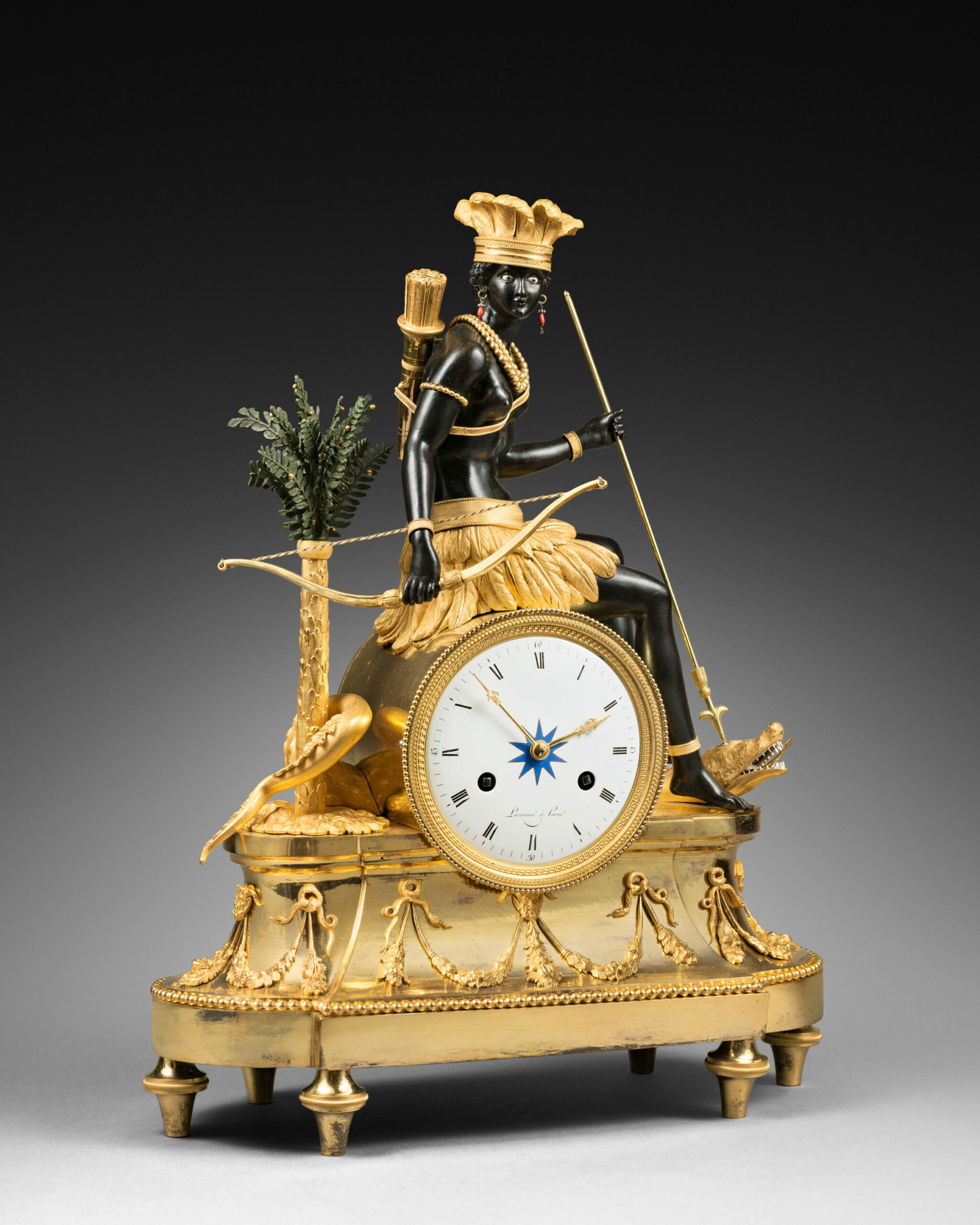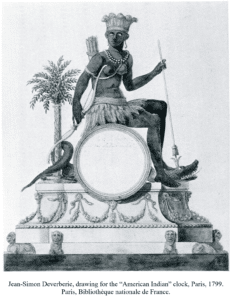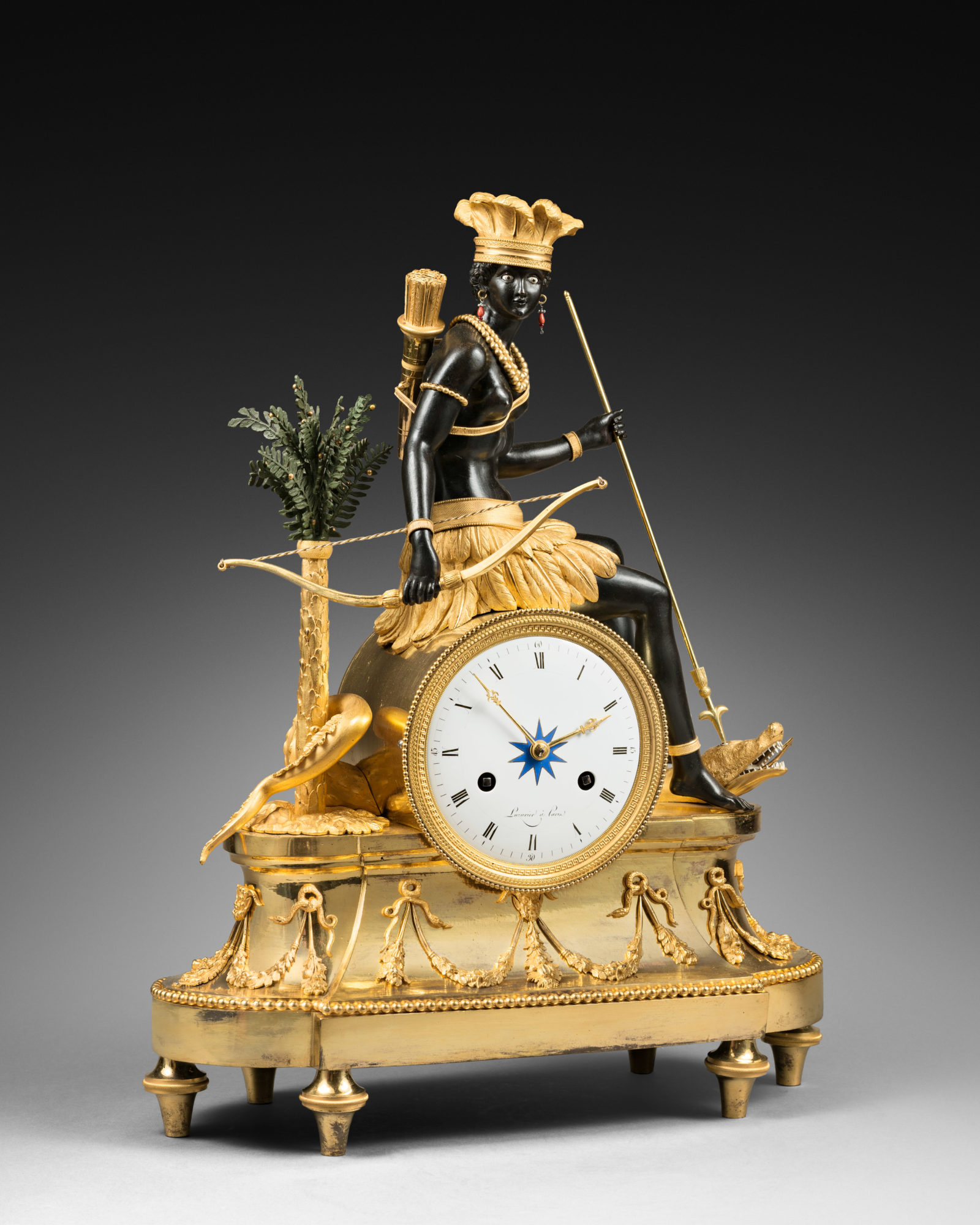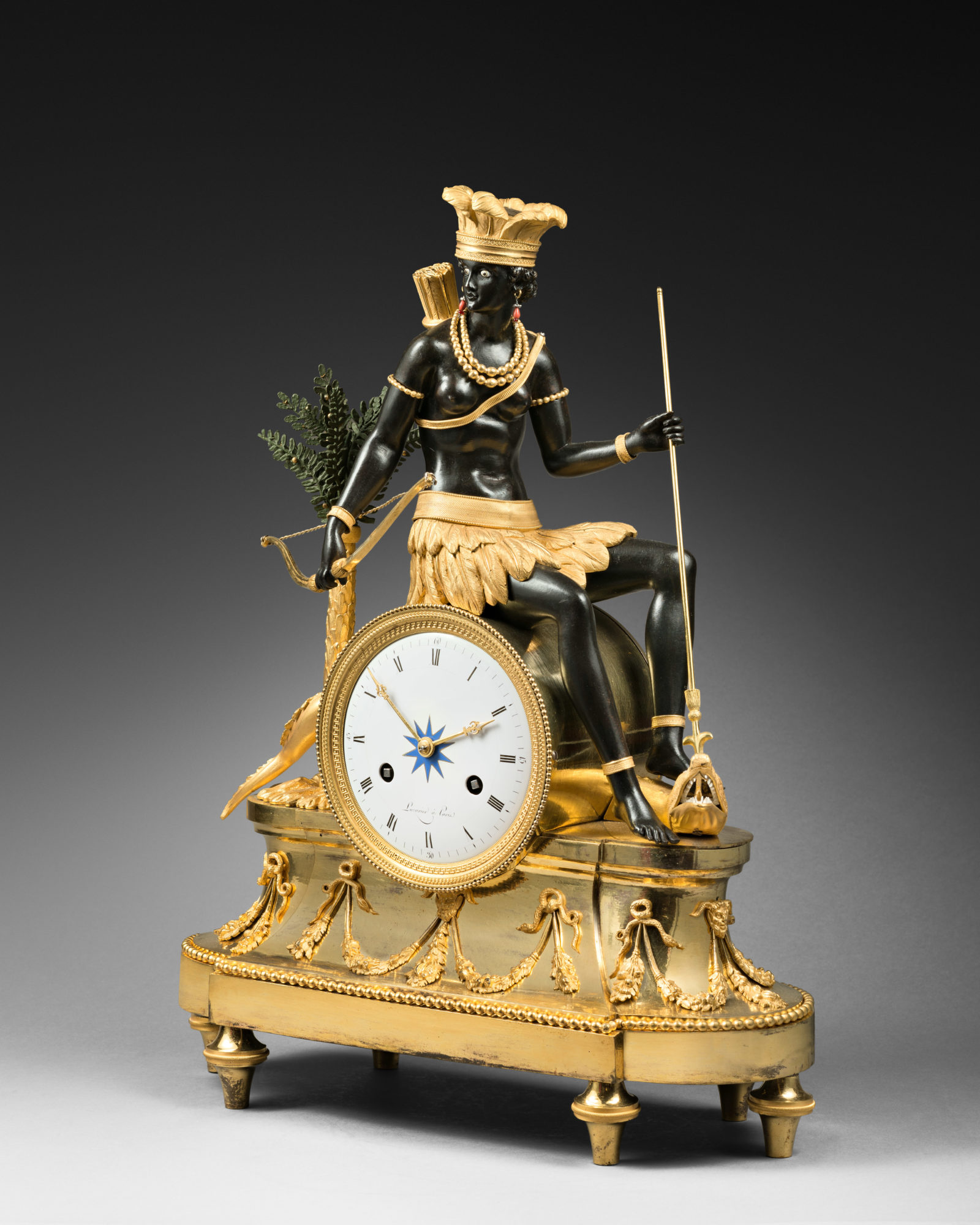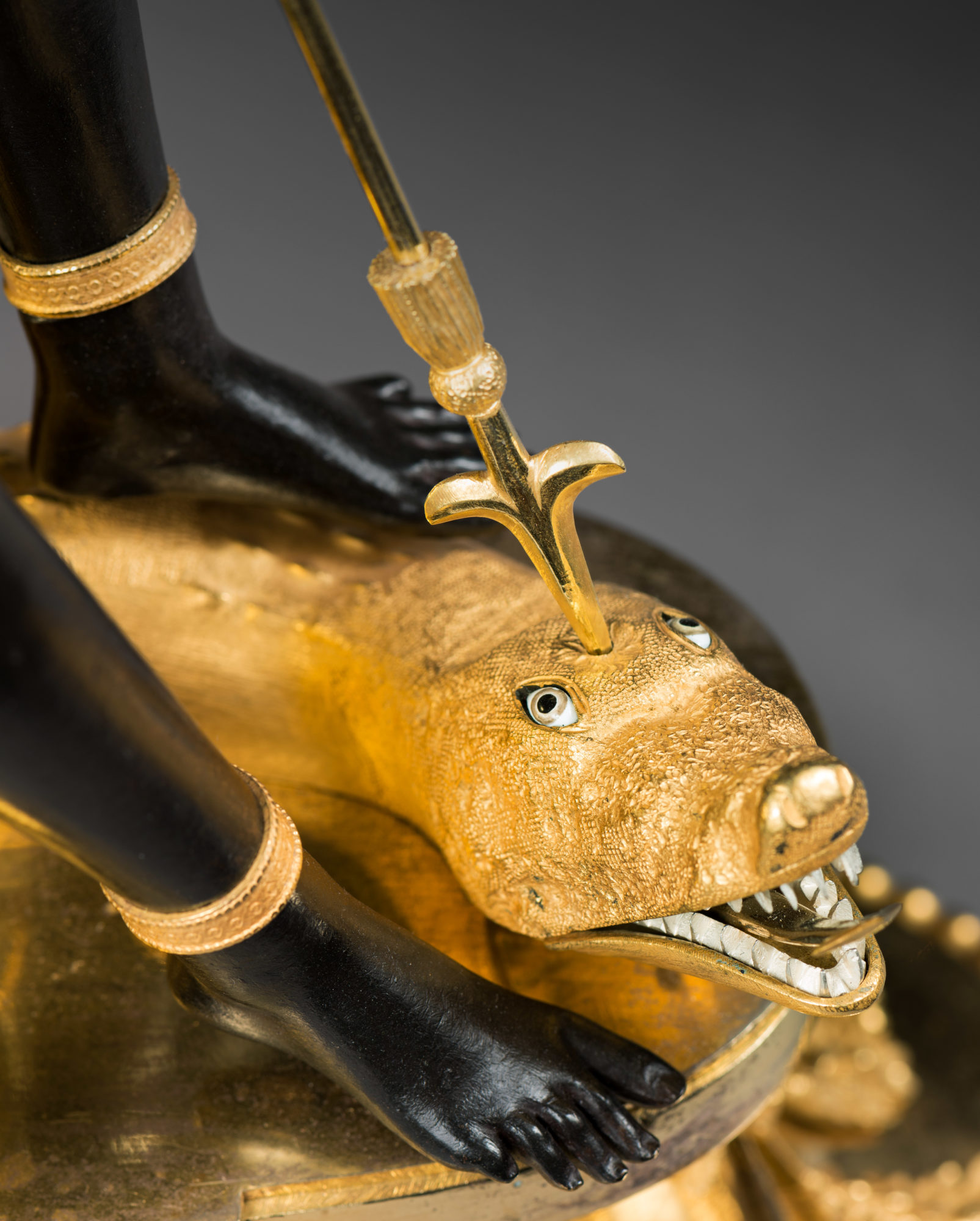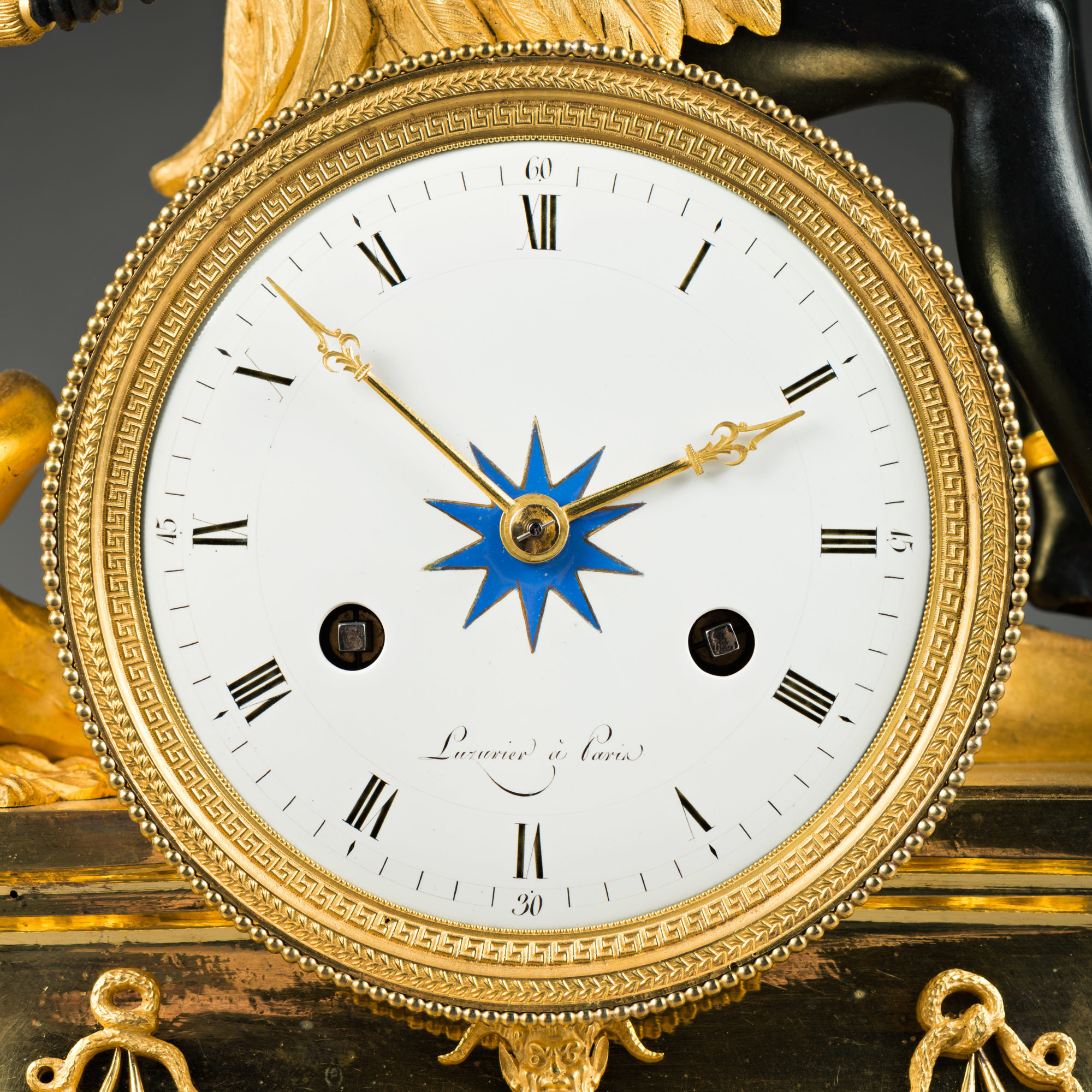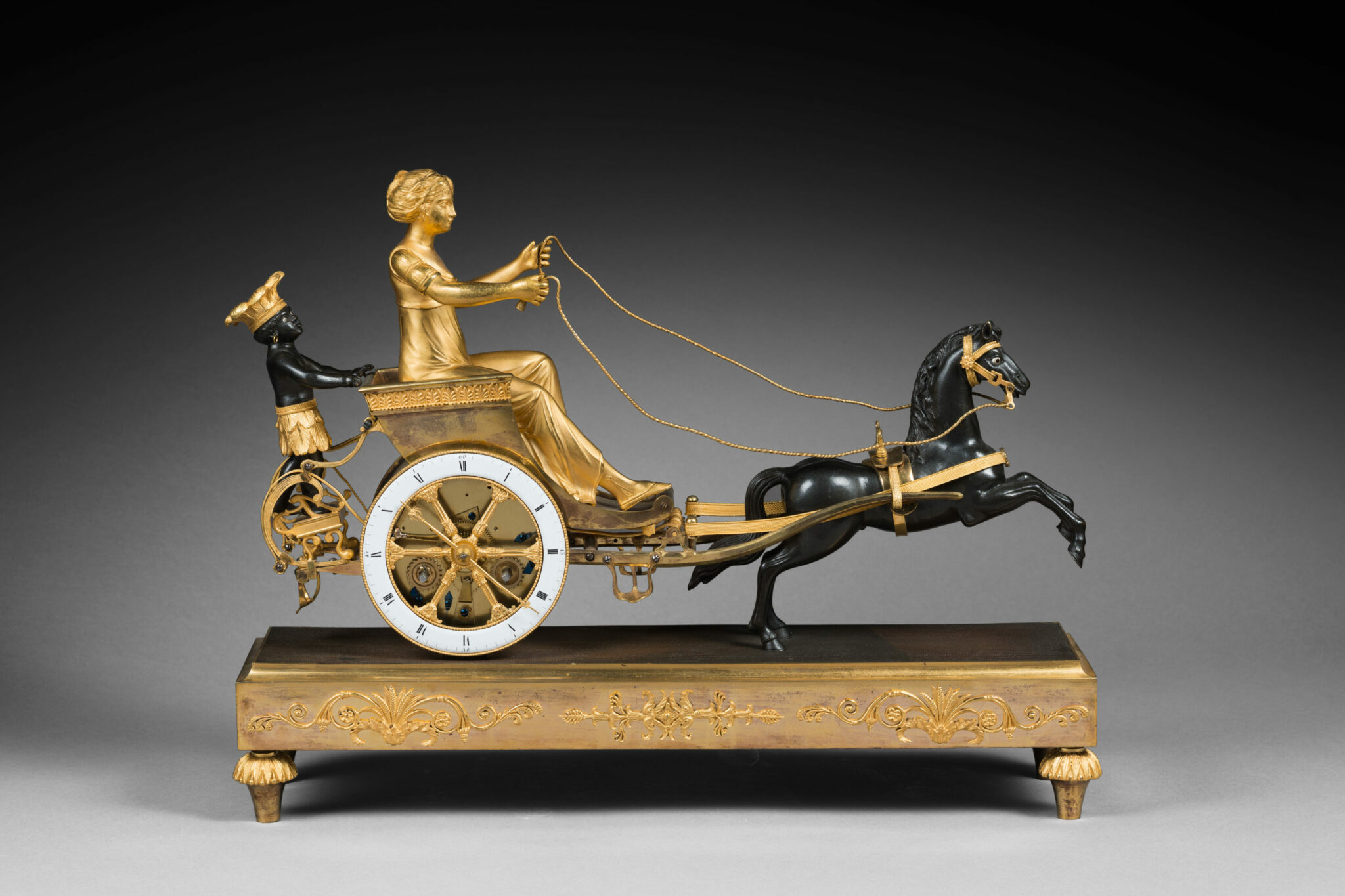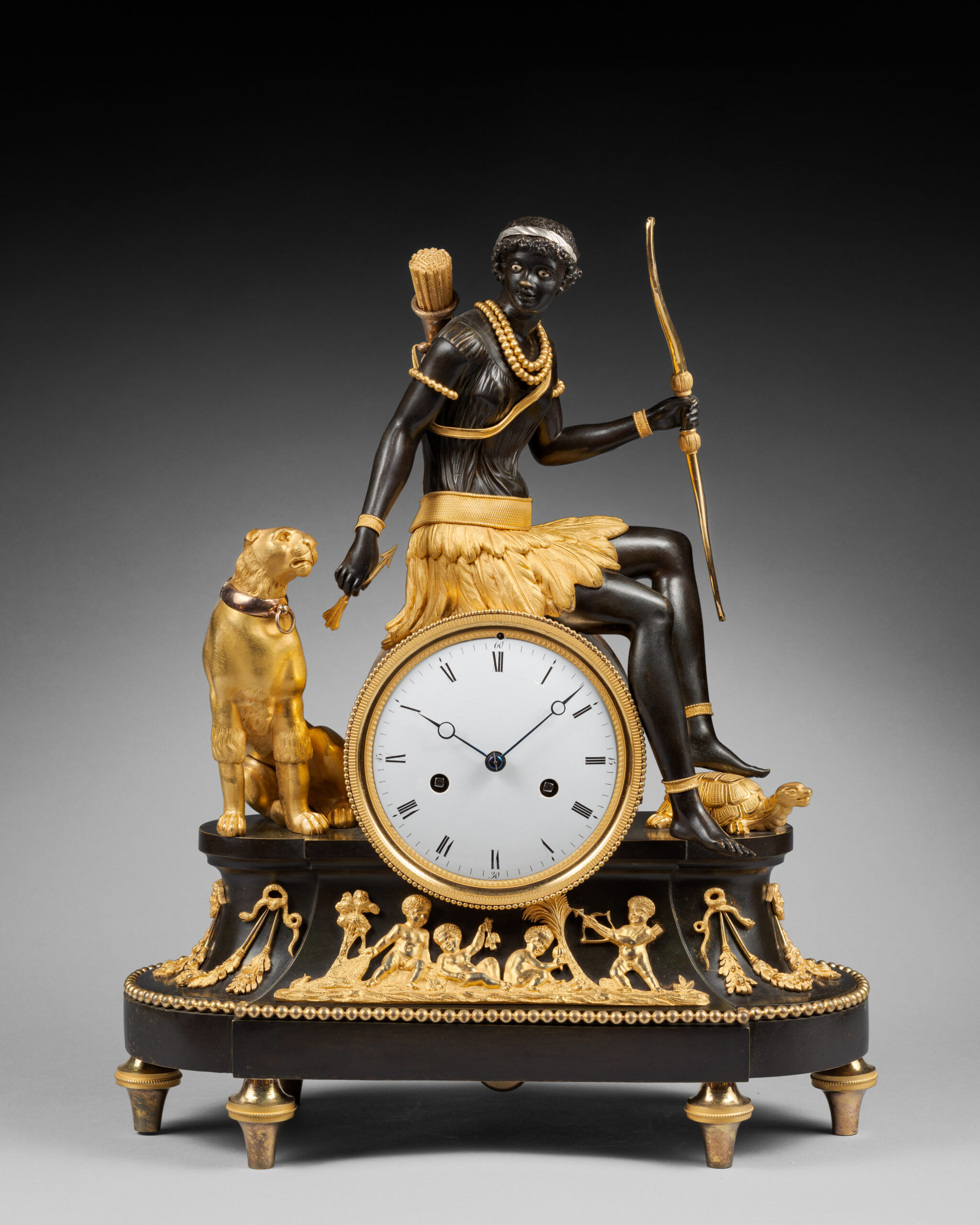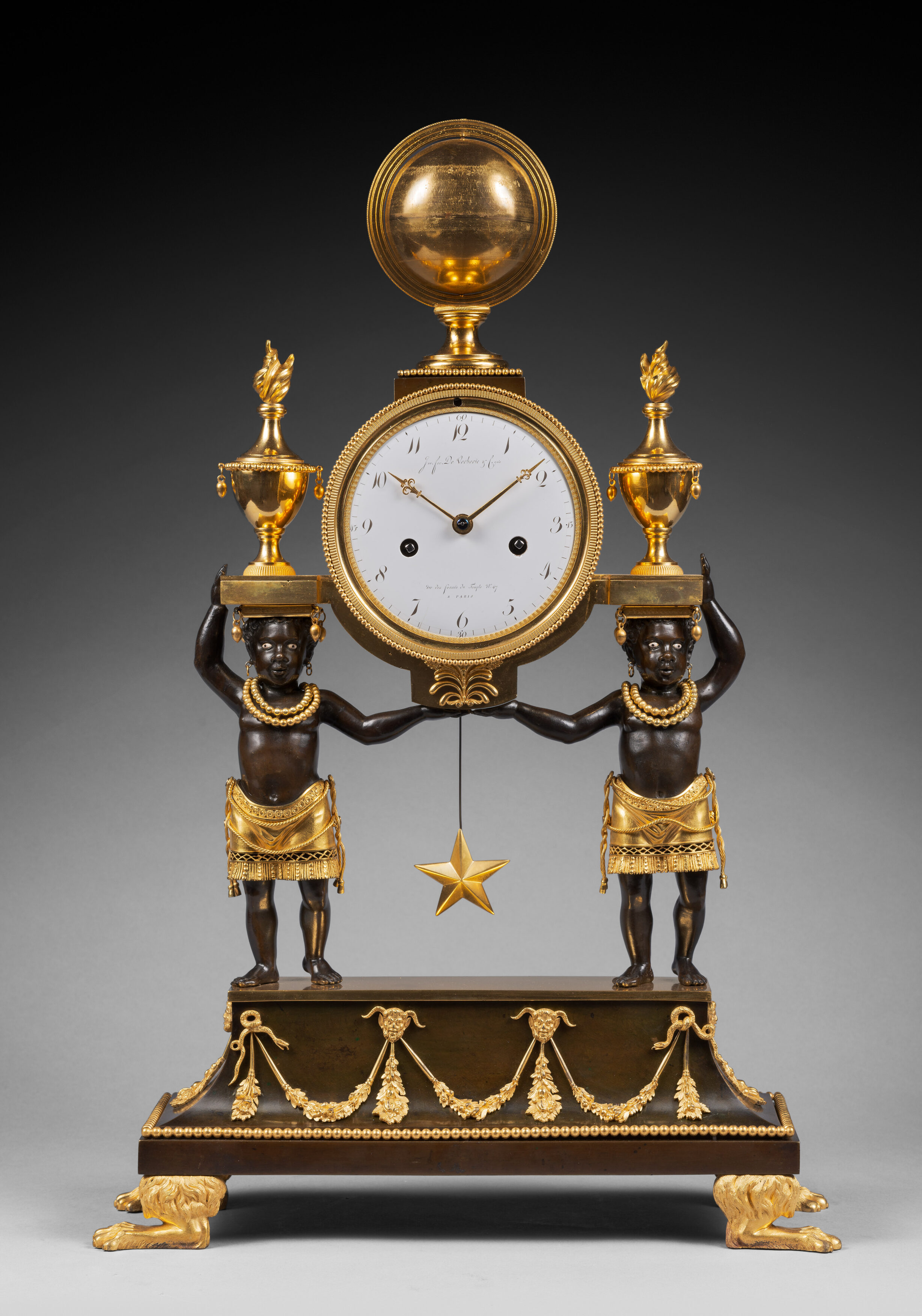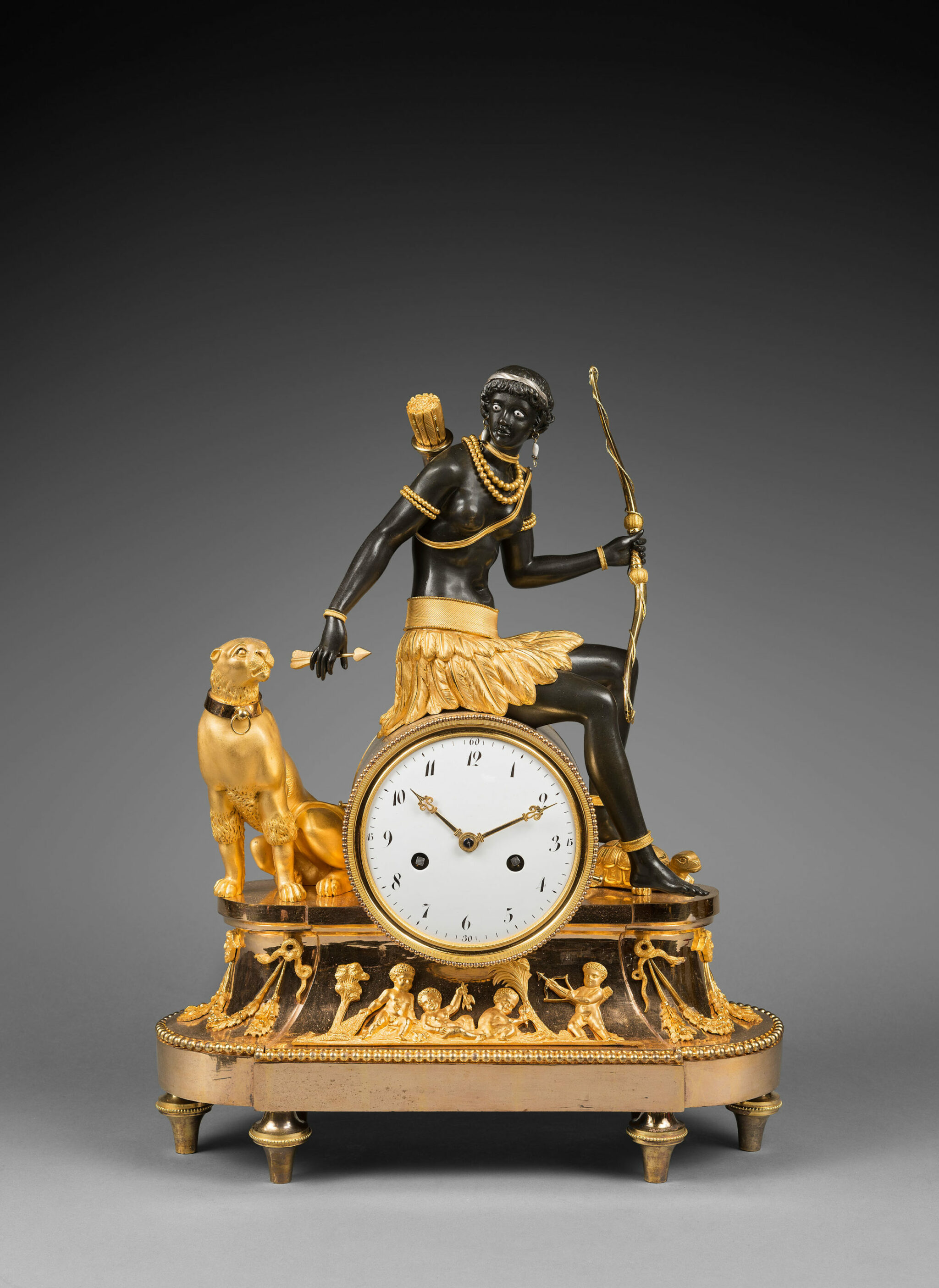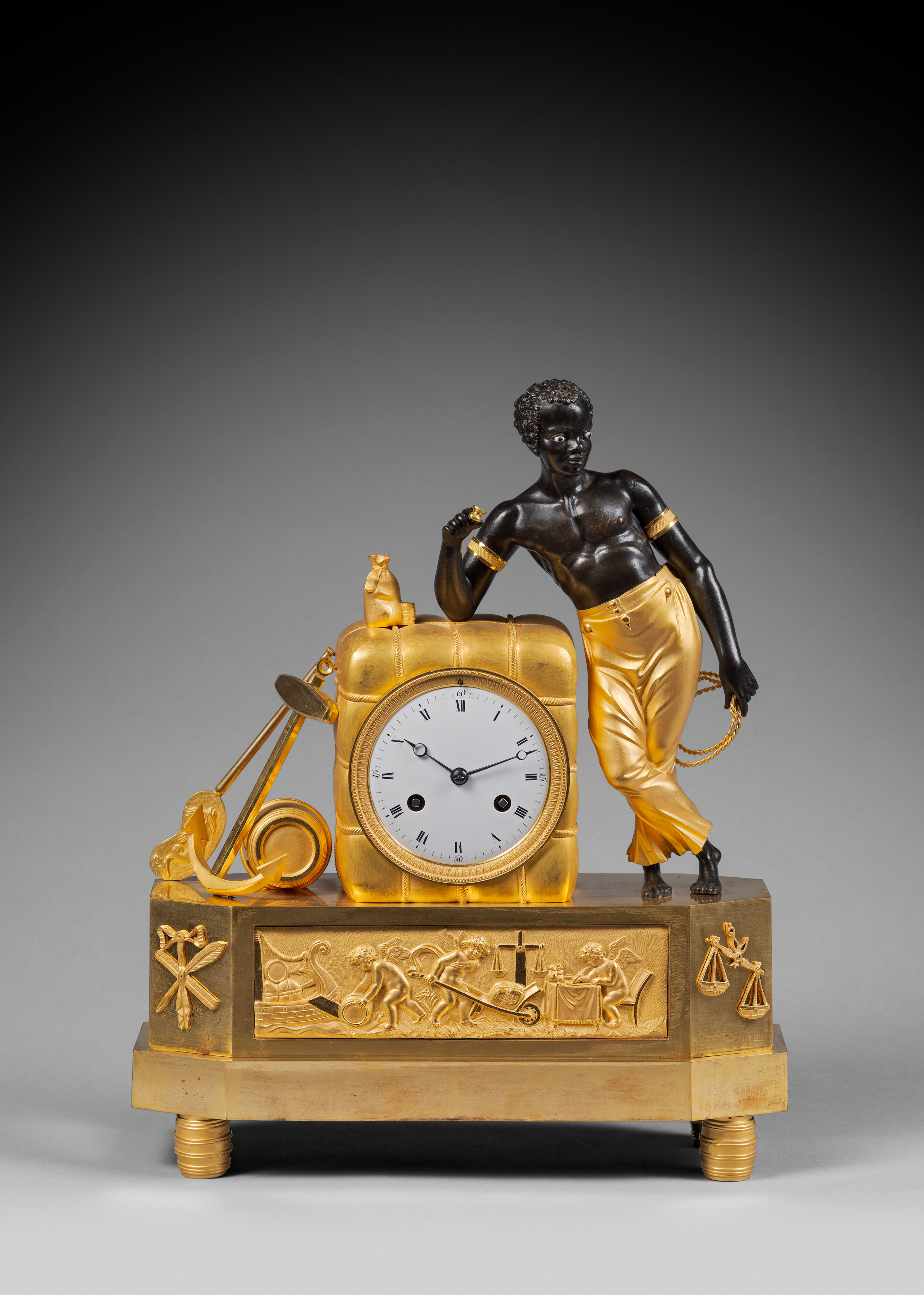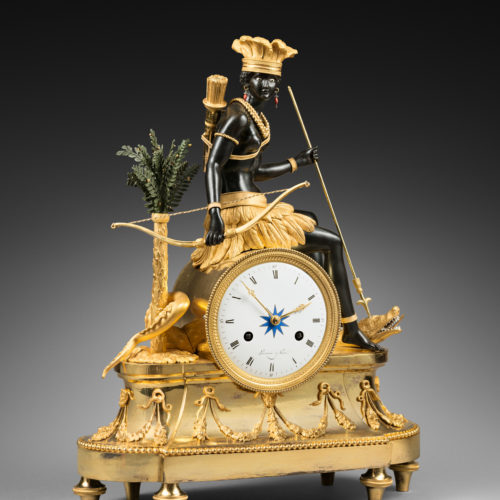Rare Gilt Bronze Mantel Clock
“The American Indian”
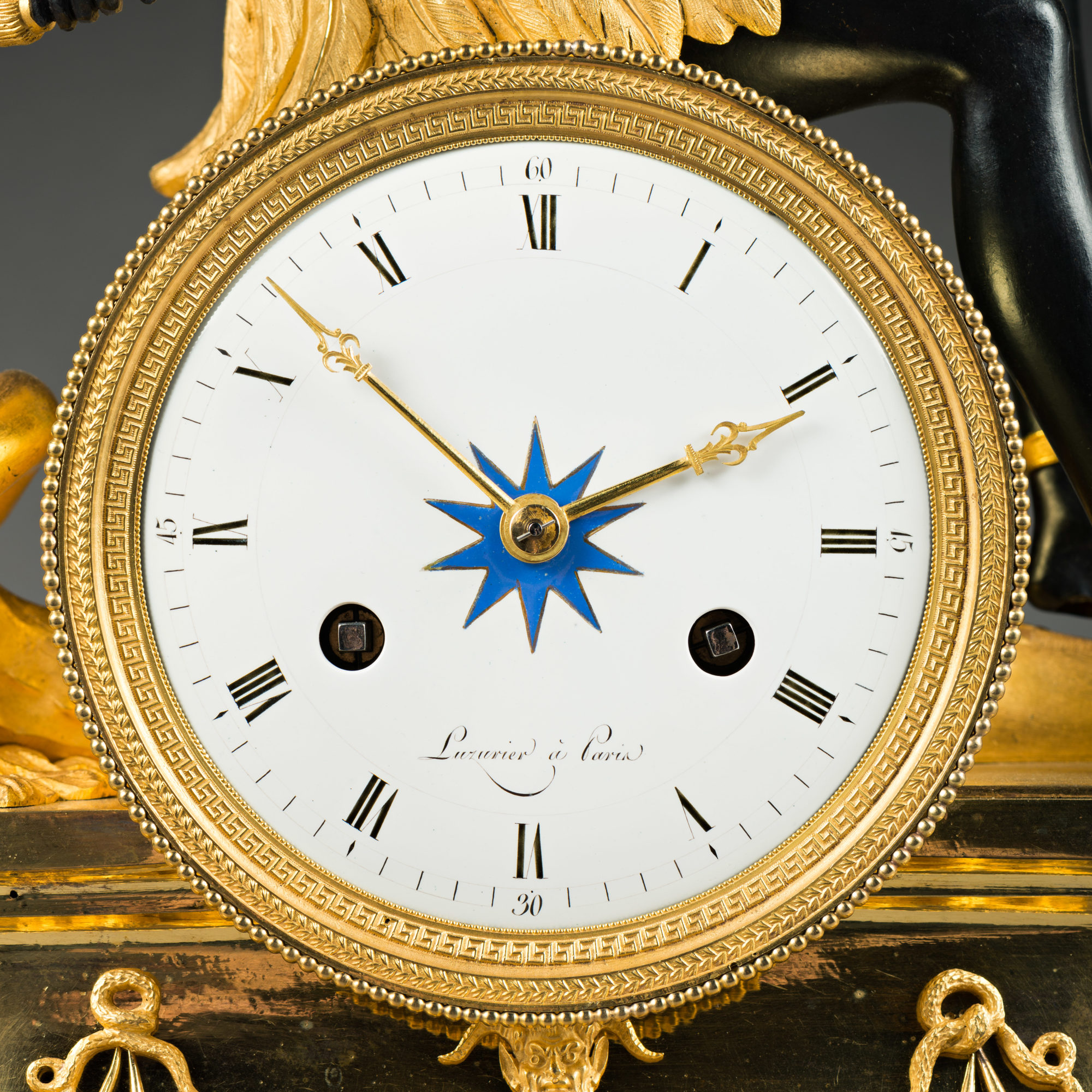
Attributed to Jean-Simon Deverberie
Paris, Directoire period, circa 1799
A very fine Empire gilt and patinated bronze “Pendule à L’Amérique”, The round enamel dial, signed “ Luzurier à Paris ”, indicates the Roman numeral hours and the Arabic numeral fifteen-minute intervals by means of two gilt bronze hands. The eight-day going movement, with anchor escapement and silk thread suspension, strikes the hour and half hour on a single bell, with outside count wheel.
The case, attributed to Jean-Simon Deverberie, is surmounted by the seated figure of a half-draped huntress with a bow in her right hand and a quiver of arrows slung across her back, an alligator lying at her feet. The waisted base is mounted with serpent-tied floral garlands and a beaded border; the whole is raised on gilt bronze toupie feet.
Discover our entire collection of antique mantel clocks for sale online or at the gallery.
Deverberie’s original case design, today preserved in the French Bibliothèque Nationale, is pictured in Tardy, Les Plus Belles Pendules Françaises, 1994, pp. 246-7. An identical clock with case by Deverberie and dial signed Gaulin à Paris is illustrated in Hans Ottomeyer and Peter Pröschel, Vergoldete Bronzen, 1986, p. 381, pl. 5.15.25. An identical case with dial signed Ridel à Paris is illustrated in Elke Niehüser, Die Französische Bronzeuhr, 1997, p. 148, pl. 239. An identical clock with dial signed Thiéry à Paris is shown in Pierre Kjellberg, Encyclopédie de la Pendule Française du Moyen Age au XXe Siècle, 1997, p. 351.
The theme of the noble savage inspired a number of clock cases. The first such model made by Deverberie, with movement by Furet and Godon, was “La Négresse”; it was presented to Marie-Antoinette in 1784. The present clock, made as a pendant to “l’Afrique”, dates from about 1799 and continued in popularity up until about 1815.
The case design reflects the vogue for exoticism that prevailed during the eighteenth century and continued into the next century. It was inspired by the notion of the noble savage as treated by such writers as Rousseau, as well as by current events. Among them was the 1767 arrival in Tahiti of French explorer Bougainville, followed by that of Captain Cook in 1769. Accounts of the harmonious life of the South Sea islanders led people to question the shortcomings of European society. The notion of the noble savage inspired some of the greatest literary works of the period, including Daniel Defoe’s Robinson Crusoe (1719), Jonathan Swift’s Gulliver’s Travels (1724), Bernardin de Saint-Pierre’s Paul et Virginie (1787), and Atala (1801) by the Vicomte de Chateaubriand.
Jean-Simon Deverberie (1764 - 1824)
Jean-Simon Deverberie was one of the most important Parisian bronziers of the late 18th century and the early decades of the following century. Deverberie, who was married to Marie-Louise Veron, appears to have specialized at first in making clocks and candelabra that were adorned with exotic figures, and particularly African figures. Around 1800 he registered several preparatory designs for “au nègre” clocks, including the “Africa”, “America”, and “Indian Man and Woman” models (the drawings for which are today preserved in the Cabinet des Estampes in the Bibliothèque nationale in Paris). He opened a workshop in the rue Barbette around 1800, in the rue du Temple around 1804, and in the rue des Fossés du Temple between 1812 and 1820.
